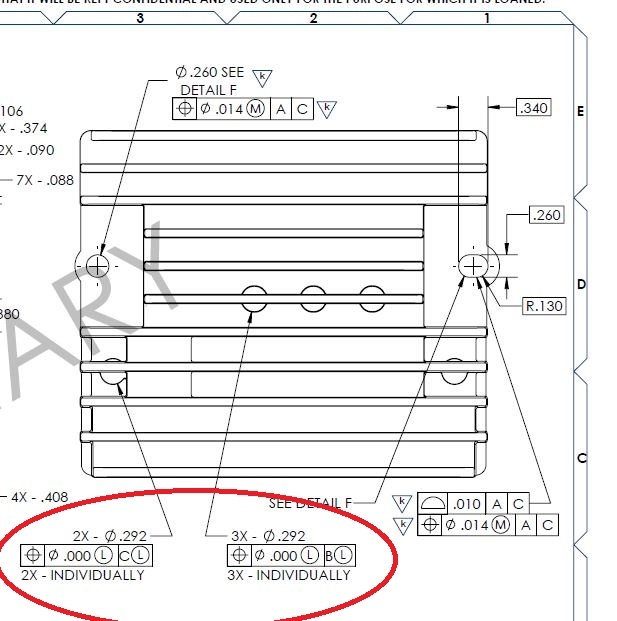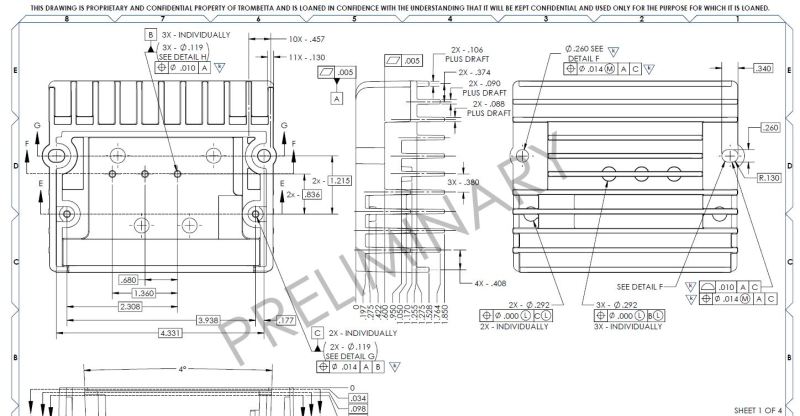abrewmaster
Mechanical
So I have a boss with a blind hole going into it and want to ensure a minimum wall thickness if either the hole or boss moves or changes diameter but want to give bonus tolerance so that the part isn't rejected.
It seems like the LMC callout is what I need for both the location as well as datum B (assuming datum B is the hole going into the boss) to convey the condition that when both the hole and boss are both at their LMC then the parts have to be dead nuts on one another but anything other than that you get bonus tolerance for the boss to move around. Is what I have drawn right now conveying that correctly or is it supposed to be called out differently? I wasn't able to find anything exactly like this online or in the ASME book that describes something like this.

It seems like the LMC callout is what I need for both the location as well as datum B (assuming datum B is the hole going into the boss) to convey the condition that when both the hole and boss are both at their LMC then the parts have to be dead nuts on one another but anything other than that you get bonus tolerance for the boss to move around. Is what I have drawn right now conveying that correctly or is it supposed to be called out differently? I wasn't able to find anything exactly like this online or in the ASME book that describes something like this.


